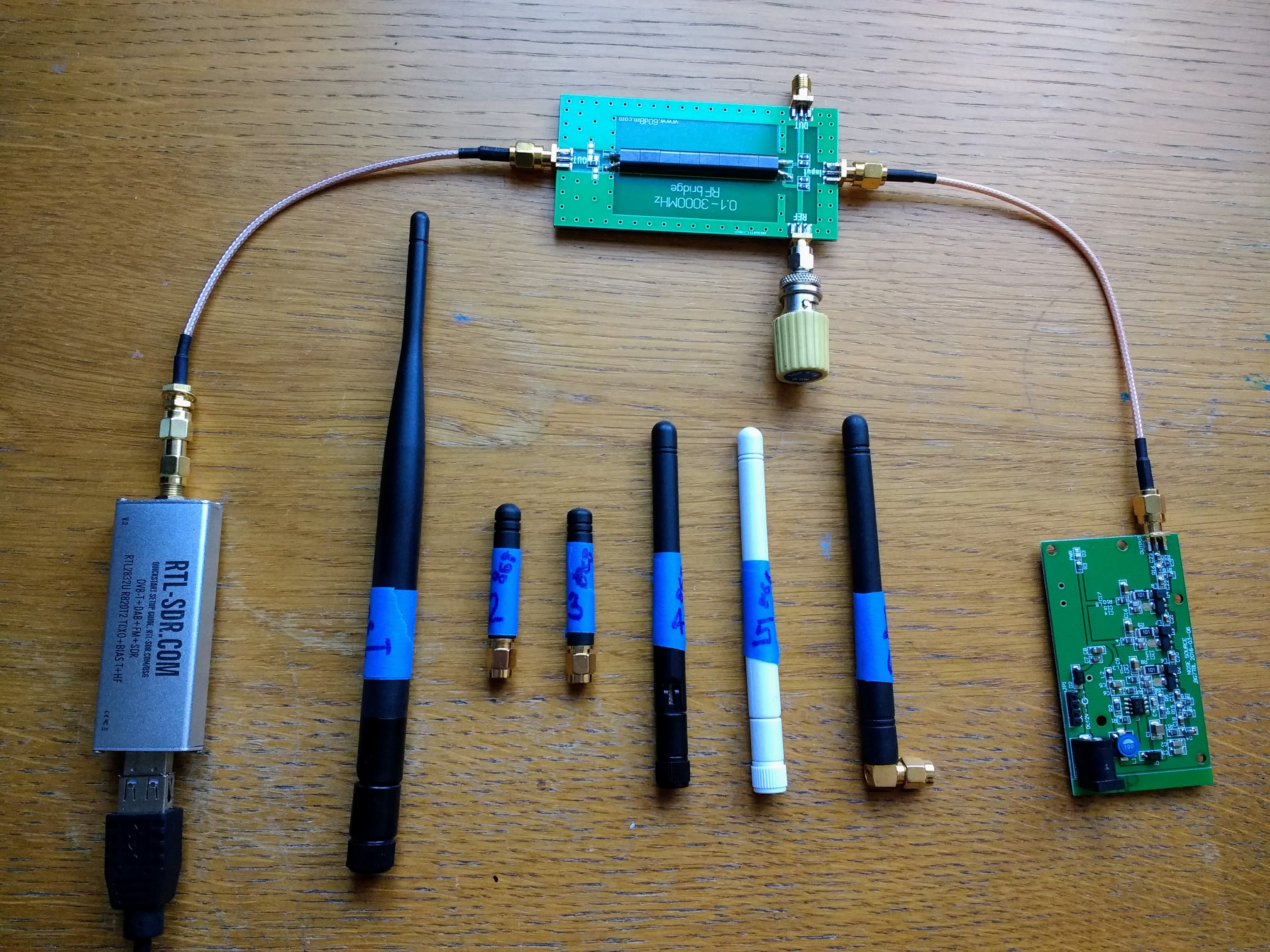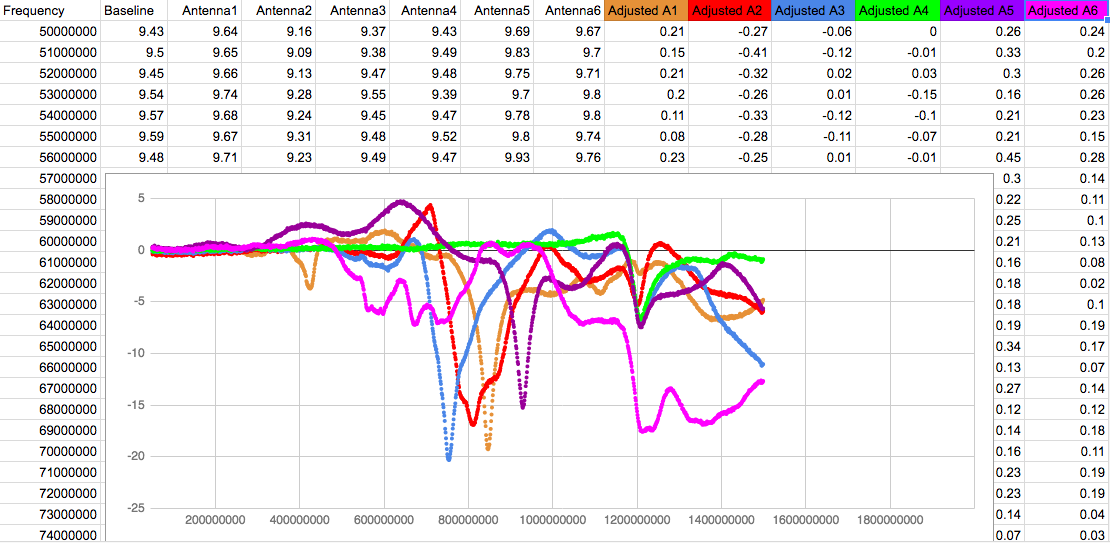Being a techy geek, (jack of all trades and master of none - especially RF), I would appreciate comments on the following: I wanted to compare how effective different antennae would be and so setup the following test rig - see photo below, showing SDR, RF-bridge with 50ohm reference and noise source, running rtl_power (RTL-SDR) and scanning from 50MHz to 1.5GHz.

I ran a scan with no antenna attached as baseline and then attached each antenna in turn, producing a plot of scan - baseline, as below:

My question is - does this show that antennas 4 and 6 (green & pink) are not tuned for the 868MHz band?
Also, is there anything I can infer about the effectiveness of the remaining 4 antennae? - Thanks!
2 Likes